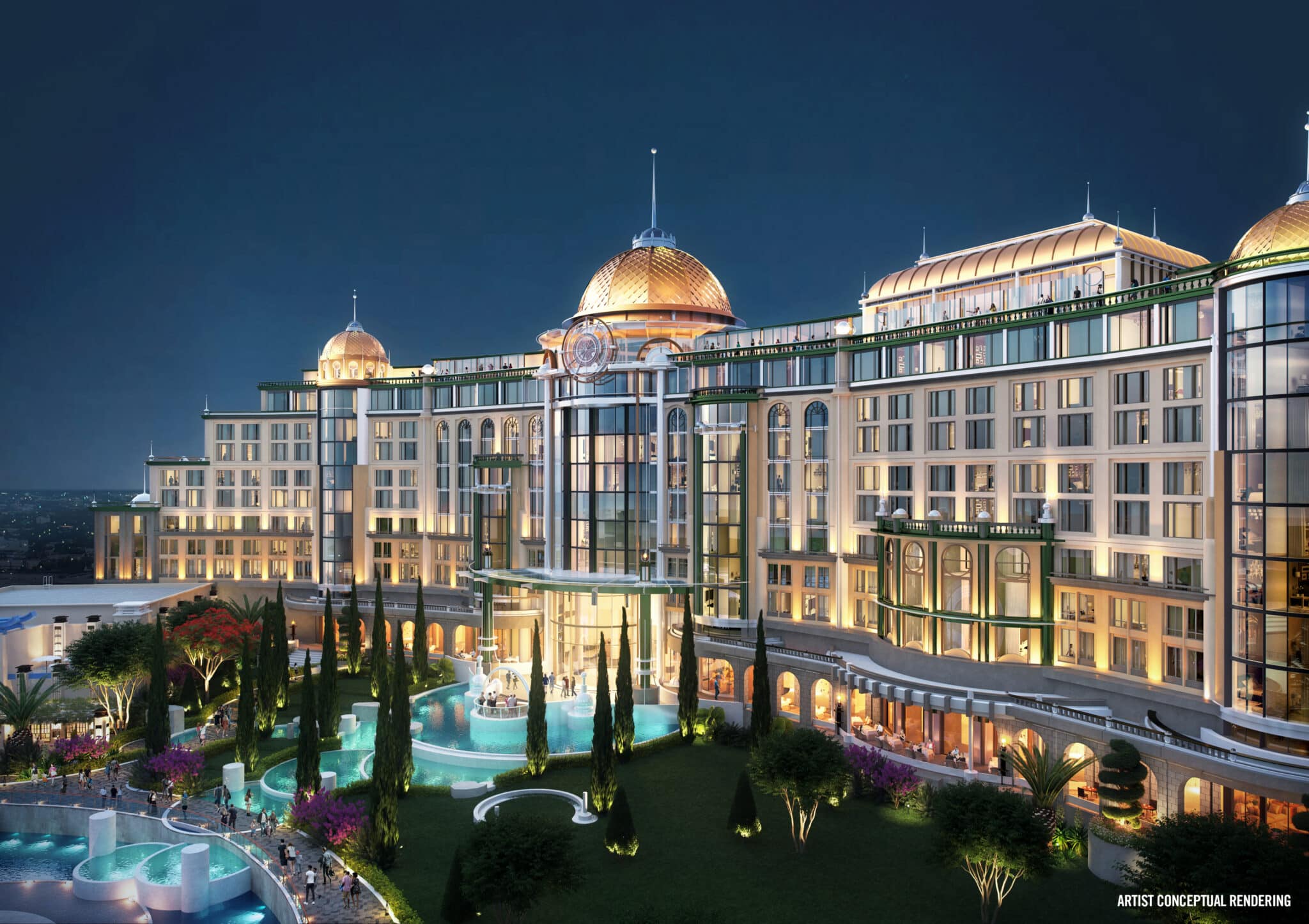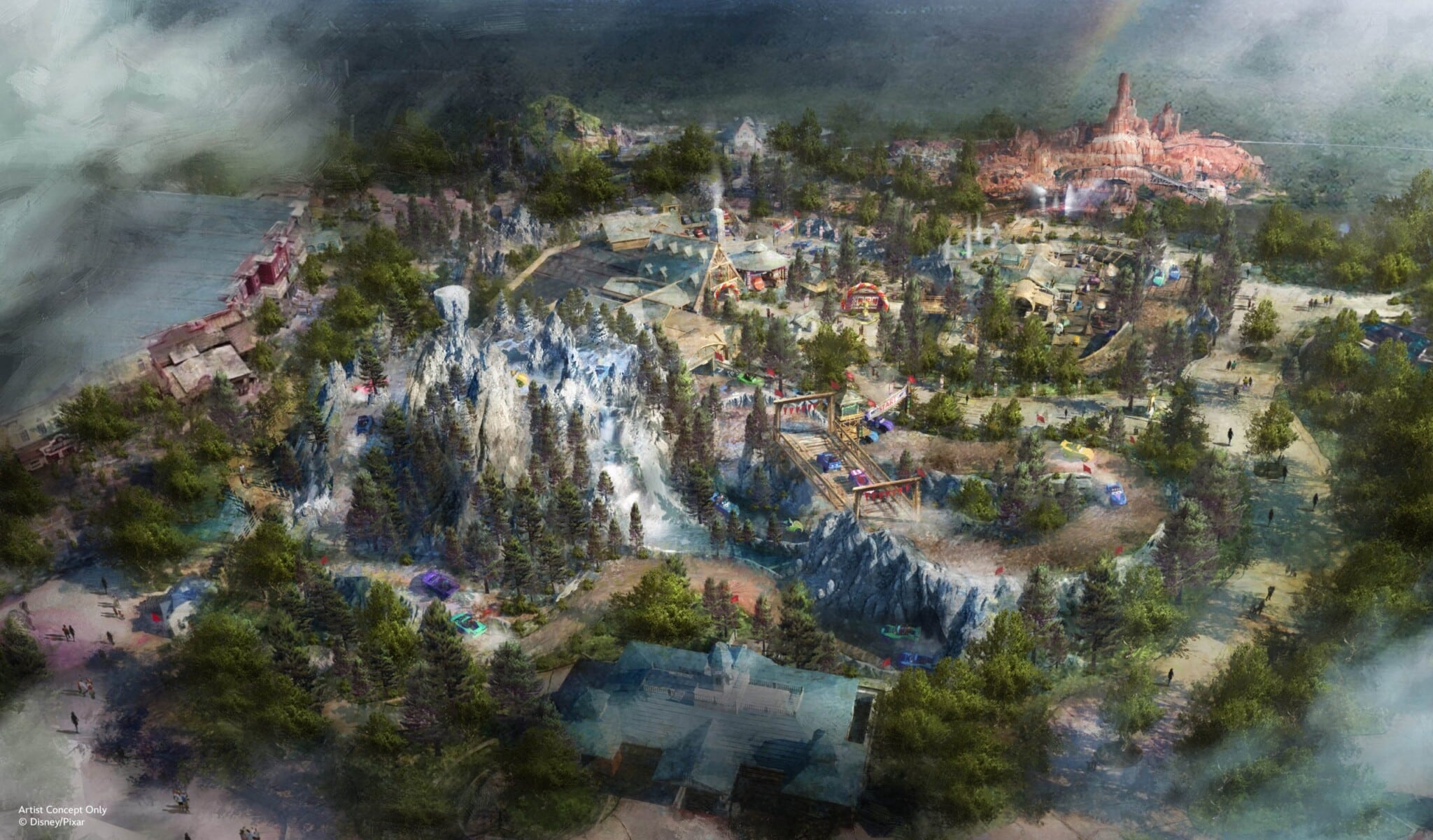
Walt Disney World’s 2023 is the year of cleaning up Chapek’s costly catastrophes. We’re not even halfway through, and arguably the biggest announcements and changes have all been about “undoing” damage done by Umbrella Bob during his reign of terror.
Okay, that is slight hyperbole. Not every single decision that’s now being corrected was made exclusively by Bob Chapek. Zero of the design work was done by Bob Chapek. He didn’t single handedly make every mistake, bungle any creative decisions, or create the catastrophes all by himself. If he were that efficient at wreaking havoc, we’d be calling him BobZilla instead!
Of course, much of this is reductionist. We don’t know who is to blame, fans want easy answers, and Chapek never minded being viewed as the villain. If anything, he seemed to relish the role–harboring hostility towards fans and offering openly antagonistic answers when interviewed. Not only that, but he was in the driver’s seat when many bad moves were made, and if any person is mostly responsible for the woes of Walt Disney World, it is Bob Chapek.
Bob Chapek was the Chairman of Disney Parks, Experiences and Products when many of these misguided moves were made, and he was CEO when a variety of unpopular changes were implemented. It’s possible to hold Bob Iger or Josh D’Amaro partially–or even almost equally–responsible, but in our view, the buck largely stops with Chapek.
To that point, one of the stories that has stuck in my head while writing this article is the board pitch for the NextGen initiative from the prior development cycle, as retold in The Messy Business of Reinventing Happiness from 2015. An article that, with the benefit of hindsight, paints a clearer picture of why Tom Staggs was forced out and did not become Disney CEO:
“Iger himself talked about how important MyMagic+ will be for the company, according to people familiar with the meeting—how it will change the fundamental nature of Disney’s park experiences and have implications for the company’s broader businesses.”
“The board broke into applause, and the meeting came to its close. The directors were chatting and readying to leave when Iger, aware of the challenges still ahead for MyMagic+, regained the attention of the small room. He looked directly at Staggs. ‘This better work,’ he said, bluntly and sternly. ‘This better work.’ The theater was quiet, the elation gone. Iger repeated, ‘This better work.\’”

The above-referenced article an interesting, albeit incomplete, history of the NextGen initiative, documenting its successes and failures up until then. It’s also a rare glimpse behind the curtain at corporate politics, turf wars, and how the blame game is played internally.
After reading that and other articles, it’s possible to view Iger, Staggs, or both as primarily responsible for the NextGen boondoggle. The point is that it’s a matter of perspective, and that’s true even with greater knowledge of the underlying circumstances and decision-making calculus.
NextGen also offers an interesting frame of reference since it should have served as a cautionary tale about spending hundreds of millions–or billions–of dollars and having almost nothing to show for it. Anyone who claims that the company under-invests in Walt Disney World is wrong. That’s not the problem at all.

The real issue is that company invests irresponsibly in Walt Disney World, overspending on some projects and flat-out throwing money away on others. Guardians of the Galaxy: Cosmic Rewind–a roller coaster rumored to cost $500 million–is (rightly) viewed as a success story of Chapek’s tenure, and that alone should say something given its astronomical price tag.
For a more measured business spending carefully to address as many needs as possible, Cosmic Rewind might be viewed as a misallocation of funds. Here? At least they didn’t blow the money on something that’s awful or already gone! Cosmic Rewind and Remy’s Ratatouille Adventure are basically the two bright spots in an EPCOT overhaul filled with unrealized potential and unfulfilled promise.
With that said, let’s take a look at the clean-up of Chapek catastrophes…

Star Wars: Galactic Starcruiser – Walt Disney World announced this week that Star Wars: Galactic Starcruiser will permanently close in Fall 2023, after being open for fewer than 600 days. It was under construction for far longer than it’ll be operational.
On the one hand, Chapek deserves credit for championing an envelope-pushing product. He was head of DPEP when Starcruiser was announced, providing the resources and freedom that empowered Imagineering to create an innovative experience. His gamble on Starcruiser is probably the best rebuttal against his beancounter reputation.
On the other hand, perhaps this is a scenario where Chapek should have counted those beans a little better. That same creative latitude resulted in an ambitious but operationally-expensive experience, and one with a limited pool of potential guests. Star Wars: Galactic Starcruiser’s failure was something that many saw coming, and it’s curious that this improbable and unsustainable experience ever came to fruition. (Fans love to knock the accountants, but there’d be no Walt without Roy; no Eisner without Wells. Starcruiser feels very much like a project gone off the rails because there was no check on the creatives worst whims and expensive impulses.)
We’re glad that we got to partake in this unique offering, and that Chapek allowed Imagineering to swing for the fences with Star Wars: Galactic Starcruiser. Conversely, we’re frustrated that nothing was done to pivot the product (definitely not Chapek’s fault) and we’re confused that proper market research seemingly was not performed in the first place to ensure long-term viability. Regardless, this is the first of multiple $100+ million Chapek initiatives to be abandoned. (The exact cost of the loss is difficult to assess since the R&D can be put to use elsewhere, but it’s still probably north of $200 million.)
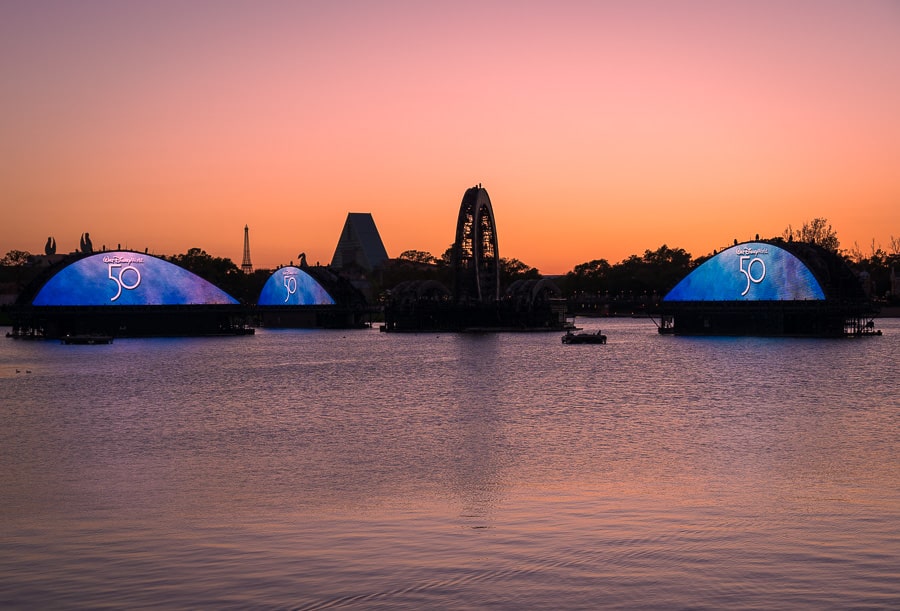
Harmonious – ‘Mistake on the Lake’ is already taken by a literal water fire, but ‘Water Taco Debacle’ has a certain ring to it for this figurative dumpster fire on World Showcase Lagoon. (On a positive note, the last of the Water Tacos was removed this week, and World Showcase Lagoon is once again looking mostly clean!)
The decision to spend World of Color level money to build a nighttime spectacular consisting of a giant Stargate and water tacos permanently present in the water with limited viewing angles is truly baffling. They literally would’ve been better off upgrading everything from IllumiNations and just building a bigger globe.
The Harmonious infrastructure came across as a solution in search of a problem, or a contrivance. An instance of the tail wagging the dog, with technology unnecessarily dictating the show presentation. There was no good explanation for opting to use Water Tacos and a Stargate with Kang & Kodos arms for an EPCOT nighttime spectacular. It was unintuitive and unnecessarily limiting, feeling like something aliens who had never seen a nighttime spectacular would build. Just a totally nonsensical look that didn’t serve any practical purpose.
To Chapek’s credit, he was still around when the decision was made to undo this. But he was also the one who made the decision in the first place, flushing a rumored $100 million down the toilet on a permanent nighttime spectacular that actually lasted less than 2 years.
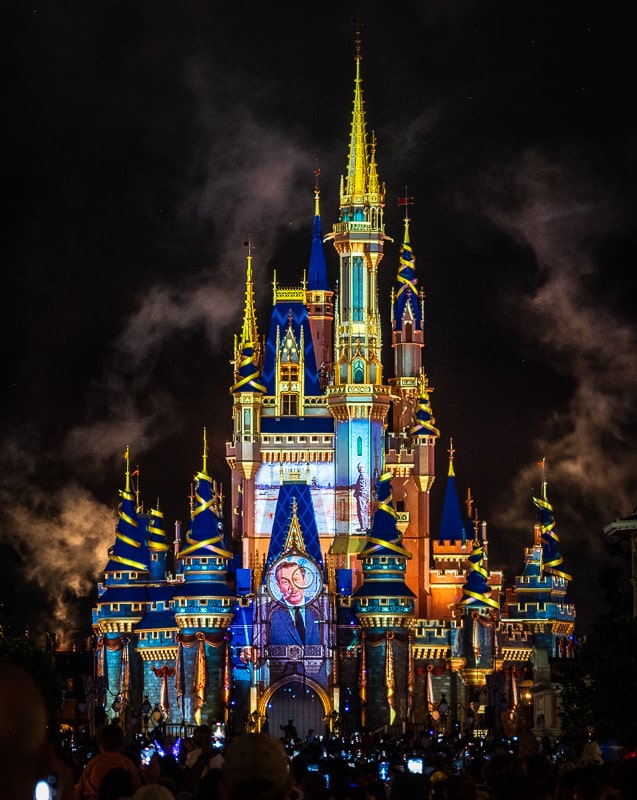
Enchantment – Honestly, I don’t view Enchantment as a true catastrophe. To be sure, I think it was bad and I’m still bitter that this, of all things, was the Magic Kingdom 50th Anniversary fireworks show. Until the belated addition of the Walt Disney introduction, it was essentially just a glorified sizzle reel for ‘what’s new & hot on Disney+, our flagship streaming service.‘ It was not a love letter to 50 Years of the Vacation Kingdom of the World. As a longtime fan, that made Enchantment feel like a slap in the face.
With that said, had Disney Enchantment debuted this summer as a limited time offering to entice people to visit, my take would’ve been dramatically different. Enchantment still would’ve missed the mark for me, but it wouldn’t have been offensive. In general, I think Walt Disney World should try more things with Magic Kingdom nighttime spectaculars (a la Disneyland), and this fits the bill there. Not all entertainment works for everyone, so it would’ve been a no harm, no foul scenario if it debuted anytime except for Walt Disney World’s 50th.
There’s also the reality that Enchantment had tumultuous origins, being created in the early days of work-from-home and against the backdrop of every media company doubling down on streaming. It’s unfortunate that those were the circumstances, but Enchantment was set up for failure from day one as a result. Being a huge champion of streaming (and sensibly so–it was the one thing that was working and driving the stock price in his early tenure as CEO), Chapek likely mandated that Enchantment feature popular Disney+ IP.
Chapek was also still around when the decision was made to bring back Happily Ever After. A decision that was inevitable unless its 50th Anniversary replacement somehow surpassed Happily Ever After’s superb satisfaction scores. So not a true catastrophe and only partially Chapek’s fault. Enchantment likely wasn’t too expensive of a lesson, and the infrastructure improvements will outlast it and are already being put to use for Happily Ever After.
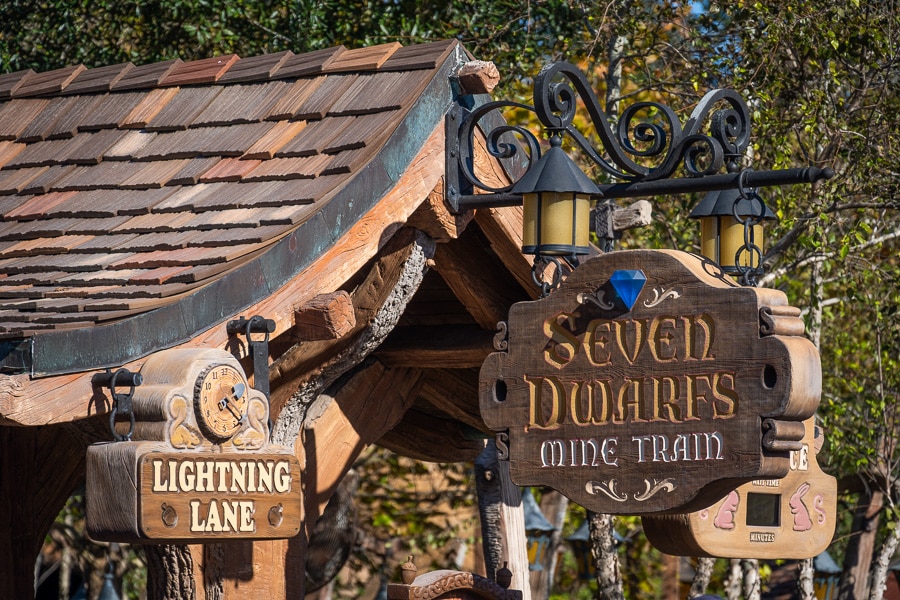
Guest Satisfaction – It doesn’t take much reading between the lines to surmise that Chapek didn’t care much about guest satisfaction at Walt Disney World. Per guest spending was his favorite metric, boasting about it being up ~40% as compared to 2019 on a multitude of occasions.
When it came to indirectly addressing guest satisfaction, he hand-waved it away on more than one occasion, bluntly stating that demand was the driver and consumers were voting with their wallets. “It’s all up to the consumer. If consumer demand keeps up, we’ll act accordingly. If we see a softening, which we don’t think we’re going to see, then we can act accordingly as well,” he told CNBC.
Based on “leaks” or planted stories in the media, it was pretty clear upon returning that Bob Iger wasn’t wild about how things had gone under Chapek and the degree to which there was disillusionment among fans. And, a little over a month after returning, he started moving on that sentiment by announcing 3 Big Changes at Walt Disney World to Improve Guest Experience & Value. A few months later came the announcement of 5 Major Improvements for 2024 at Walt Disney World.
All of this is what we’ve been expecting and hoping to see for a while. Part of this is undoubtedly an operation Chapek cleanup, and another part is a drop in demand necessitating guest-friendly changes. Pent-up demand lasted longer than anticipated, and frankly, it was a distortion that had unhealthy consequences at Walt Disney World and beyond.
Putting that in the rearview mirror is good for consumers and the long-term health of the company–especially its reputation and guest goodwill. Walt Disney World not doing record-breaking numbers regardless of the guest-unfriendly decisions and changes they make–and instead having to actually compete for customers–is a good thing. Chapek would’ve been well-advised to appreciate that even as “revenge travel” created so much success. (Notably, “revenge travel” also created similar success for other travel companies without so much self-inflicted damage. That 40% increase in per caps was not the result of novel or clever Chapekian initiatives–it was the natural consequence of economic stimulus and pent-up demand.)
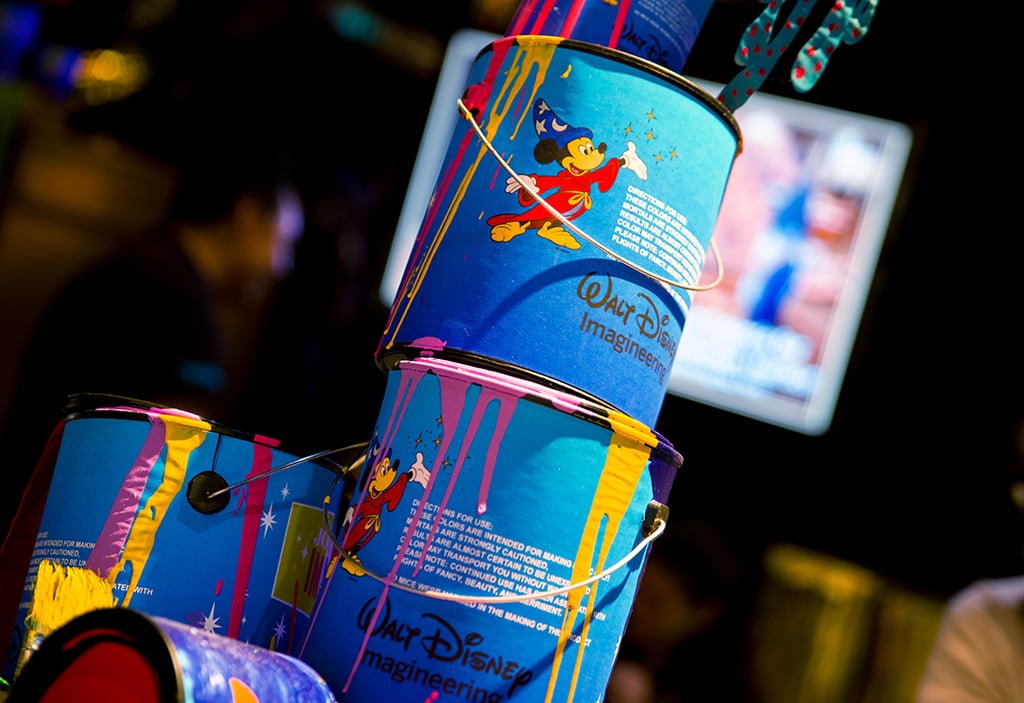
Imagineering Relocation – Another announcement made this week is that Disney cancelled the creation of a creative campus in Lake Nona that would’ve moved Imagineering and other DPEP employees from Southern California to Central Florida. This has been widely reported as Iger following through on his “threat” during the earnings call to withhold future investments in Florida due to the ongoing standoff with the state.
Between credible info I’ve since received paired with public statements, I’m now confident that is not the actual explanation. The decision to relocate Imagineering from Glendale, California to Lake Nona, Florida was a Chapek move. Not one for frivolities such as “history,” “legacy,” or “sentimentality” (attributes a company such as Walt Disney certainly should not possess), Chapek made the unpopular decision in 2021 when employee morale was already low. “Hold my beer,” he said, when challenged to somehow make a bad situation worse.
The reversal of the decision was set in motion in November 2022. That’s when Bob Iger returned as CEO, and although he hasn’t publicly spoken (yet) about cancelled move, our understanding is that it has more to do with the aforementioned attributes and morale than anything else. To be sure, there were likely aggravating factors including “evolving economic and business conditions” as well as upfront costs of construction. Iger also probably does not mind the media inferences that it’s a checkmate move in the ongoing battle with Governor DeSantis. However, from what we understand, this decision became an inevitability last holiday season.
Whether this is better characterized as cleaning up a catastrophe or a short-sighted decision in light of Central Florida’s tourism boom is likely a matter of personal perspective and priorities. As fans the company’s rich history and creative legacy, as well as regular visitors to both Walt Disney World and Disneyland, we’re mixed on the cancelled Lake Nona campus–but believe it was bungled (and possibly doomed) from the beginning.
It’s difficult to quantify the damage done here. The hit to morale and the institutional knowledge losses resulting from WDI departures are incalculable. Money was also likely spent on design and development, as well as prepping for the relocation. More will be spent to move impacted families from Florida back to California. However, much of the money spent on land can be recouped–Disney might even see a windfall there, as Central Florida property values have increased since 2021.
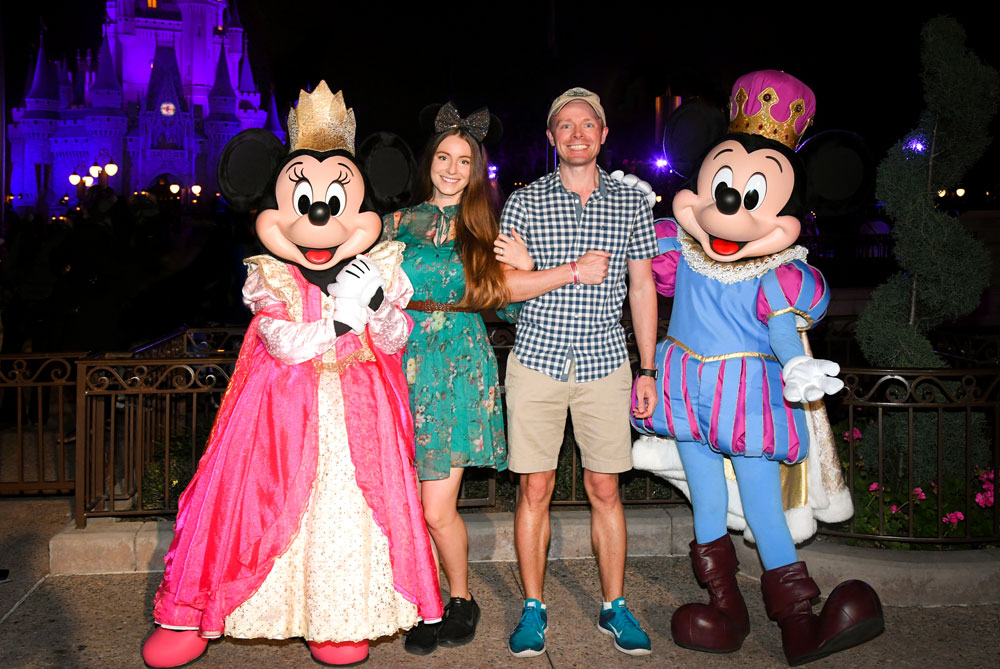
Reedy Creek – No matter where you stand on the DeSantis vs. DeSantis battle, you probably think Bob Chapek bungled his initial response, follow-up, follow-up to the follow-up, and whatever else it was that he was trying to accomplish. No one listened to what Chapek had to say and thought, “he articulated the company’s perspective eloquently and handled a tricky situation well.” To his credit, Chapek was highly successful in uniting both sides in disdain for him. A rare and impressive feat, to be sure!
Chapek’s whole approach to the controversy was comedy of errors, remedying mistakes with even more mistakes, and managing to alienate literally everyone on the political spectrum in the process. Chapek’s blundering of this situation will be studied in political science textbooks in the decades to come as a lesson in what not to do.
Whether you’ve agreed or disagreed with Bob Iger’s approach and subsequent escalations and moves, it’s also fair to say that he’s essentially playing the bad hand that got dealt to him by Chapek. This is another one that’s impossible to quantify, but there has undoubtedly been a degree of brand damage as Disney has become a central figure in the culture wars.
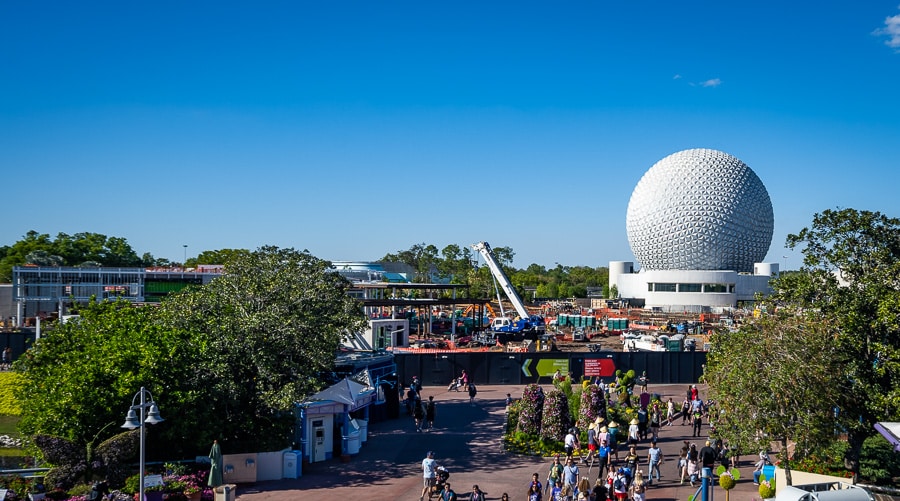
Giant EPCOT Dirt Pit – Congratulations Disney, you’ve worn me down! As much as I wanted an ambitious new central spine that replaced the dead 1990s mall vibes with something ambitious, energetic, and innovative…I’m just ready for this to be finished at this point.
Once everything is finally said and done, it’ll have been 4 years that the central spine of EPCOT has been torn up and behind construction walls. That’s a ridiculous amount of time to have the main corridor of the park out of commission. The pace of the project has been too slow from the outset, but it’s only gotten worse post-reopening. At least it was going to be ambitious at one point, overhauling a park that had been stagnating for far too long while adding unique architecture and interactive features.
What’s discouraging is to go through 3 rounds of redesigns and end up with this. It seems incredibly short-sighted to build something roughly equivalent to what they tore down (minus the symmetry). It’s a tremendous waste of time and money for a before and after difference amounting to “more trees!” and “one fewer fountain!” This is going to be around for decades to come, and looks wholly unambitious and uninspired. Whatever, though. It’s not like this is the park dedicated to the spirit of human innovation and imagination. Oh wait.
I have zero insight into how much money has been blown on the various iterations of the design, construction delays, and unrealized revenue resulting from so much of EPCOT being out of commission. Probably safe to say it would’ve cost far less money (and taken 2-3 fewer years) to simply build the current design in the first place. My guess is that this is pretty close to another $100 million down the drain.
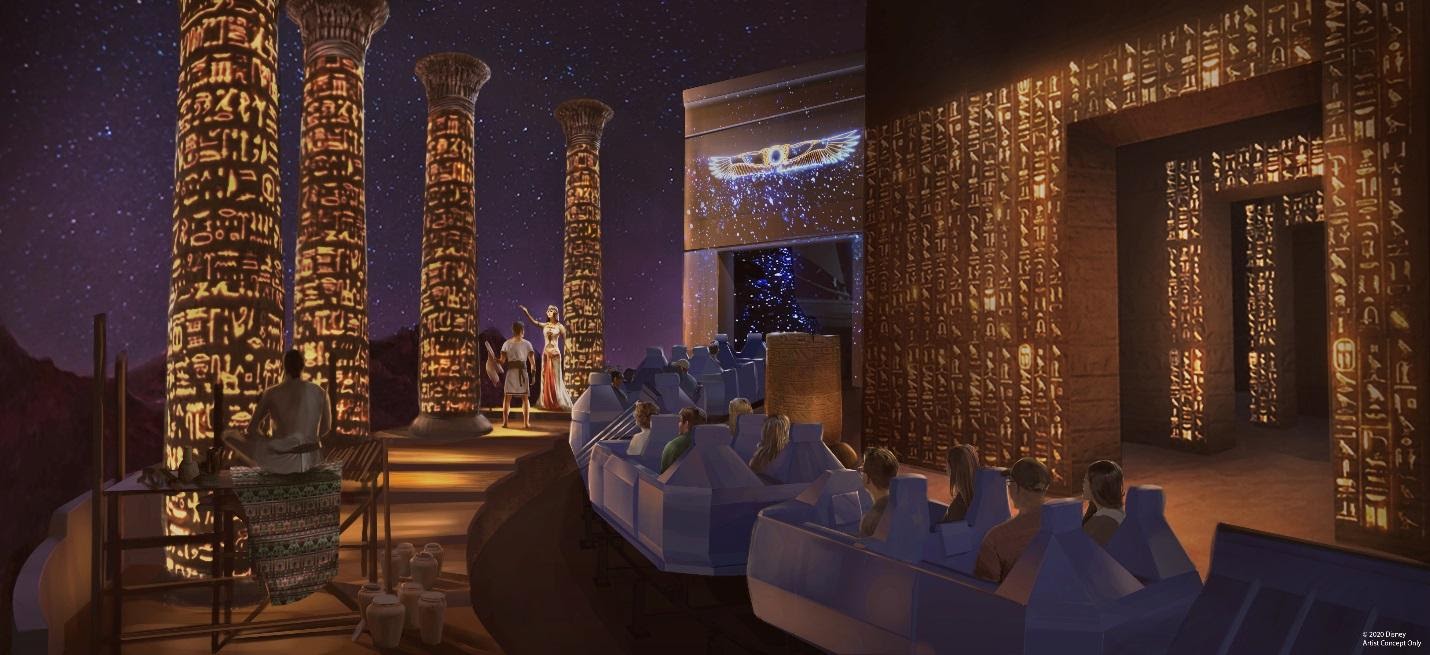
Suffice to say, a lot of money has been wasted as the company has cleaned up the mess left by Chapek-era ideas or gone in different directions. Admittedly, not all of the blame rests squarely on the shoulders of Bob Chapek. He’s just one person, and he didn’t singlehandedly make all of these decisions while head of DPEP or CEO of Disney.
With that said, these aren’t the only abandoned ideas of the last several years–add the Mary Poppins expansion at EPCOT, Reflections Lakeside Lodge, Play Pavilion, Spaceship Earth reimagining, and more to that list. Some of that could certainly be blamed on COVID, but it also could be attributed to leadership lacking confidence and foresight to see past the closures to future dynamics and demand. (Same goes for the entirety of EPCOT, for that matter. There’s absolutely no good reason why that project isn’t done.)
While it might be fun to play the blame game, who’s at fault doesn’t really matter (well…it sorta does if the individual(s) mostly responsible are now gone and can’t make the same mistake(s) again!). Although this article is critical, we also appreciate that Walt Disney World has so quickly pivoted on some of these things, essentially admitting a mistake and moving on rather than trying to save face. That’s laudable and refreshing. But it’s also not the main takeaway here.
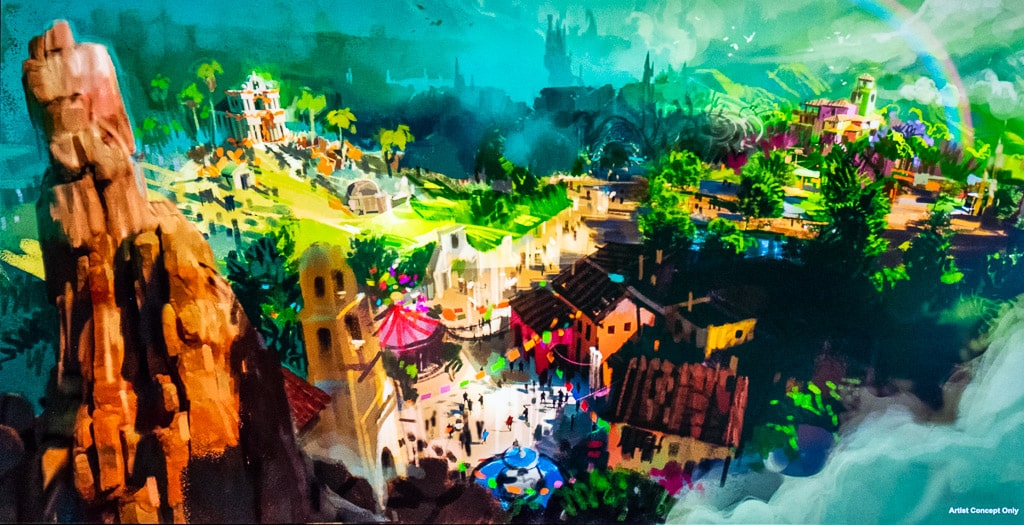
The most salient point is just how many hundreds of millions of dollars have been wasted in the last 5+ years on projects that never came to fruition, were follies from day one, or short-lived and subsequently abandoned additions. We’re talking about at least $500 million, and possibly more. That’s approximately another New Fantasyland, Pandora, Toy Story Land, or even Cars Land that could’ve been added to Walt Disney World.
Hopefully an important lesson has been learned. Bob Iger has already revealed and reiterated (several times) a plan to invest $17 billion on Walt Disney World expansion over the course of a decade. Now, that won’t start until after streaming is sorted out and the standoff with Florida winds down (so, 2025), but it is real and it is a lot of money that could result in significant and meaningful expansions in all four parks.
However, that requires no boondoggles like the NextGen initiative or so much of what has been done over the last several years that cost a lot but bore little fruit. Disney Parks & Resorts projects have inflated budgets and prolonged timelines. That’s just a fact of life, and it comes with both good and bad. We aren’t expecting Walt Disney World to be as nimble and economical as Universal or regional amusement parks; that’s unrealistic.
On the other hand, Disney will have invested more in Florida over the course of the last decade than Universal Orlando after Epic Universe opens (2015-2025). That almost certainly won’t be apparent to the average guest in comparing the recent and new additions of each. Here’s hoping that Walt Disney World’s next development boom has a better batting average, with far less money wasted. We appreciate Iger and D’Amaro cleaning up Chapek’s costly catastrophes…but hopefully we’re not writing a similar article 5 years from now about the next CEO and DPEP Chairman undoing D’Amaro’s damage and Iger issues!
Planning a Walt Disney World trip? Learn about hotels on our Walt Disney World Hotels Reviews page. For where to eat, read our Walt Disney World Restaurant Reviews. To save money on tickets or determine which type to buy, read our Tips for Saving Money on Walt Disney World Tickets post. Our What to Pack for Disney Trips post takes a unique look at clever items to take. For what to do and when to do it, our Walt Disney World Ride Guides will help. For comprehensive advice, the best place to start is our Walt Disney World Trip Planning Guide for everything you need to know!
YOUR THOUGHTS
What do you think about the company cleaning up Chapek’s costly catastrophes? Think Umbrella Bob is mostly to blame for these failures, or were they a “group effort” with blame to go around for OG Bob and Josh D’Amaro? Wish Walt Disney World would’ve built Cars Land or another new land instead of Galactic Starcruiser, Harmonious, etc? What is your reaction to Bob Iger’s announcement that the company plans to invest $17 billion on Walt Disney World in the next decade? What potential plans or projects have you most and least excited? Anything you’re hoping does not end up coming to fruition? Do you agree or disagree with our assessments? Any questions we can help you answer? Hearing your feedback–even when you disagree with us–is both interesting to us and helpful to other readers, so please share your thoughts below in the comments!



